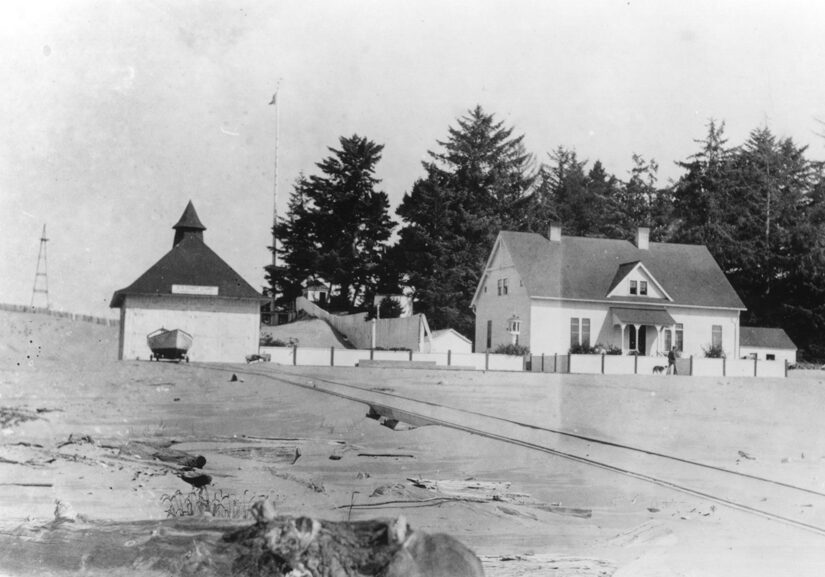Inventory of Stations
The USLSSHA has completed a comprehensive inventory of surviving coastal rescue stations dating to the Life-Saving Service era and the Coast Guard era up to 1961. (See description of this project below.) This database is re searchable. We are aware that not all of this information is correct, as such things as ownership or condition do change over time. If you find errors in this database, or information that needs to be updated, contact us.
National Life-Saving Station Inventory Project
Inventory
The USLSSHA undertook a project to physically inventory all surviving coastal rescue stations established by the US Life-Saving Service and Coast Guard prior to 1961. It’s estimated that nearly 450 stations were established throughout the US, many of which are no longer active. Approximately 129 of the original US Life Saving Service stations still exist, with the balance being built by the US Coast Guard. Some stations are still in use by the Coast Guard, others have been left abandoned or are facing imminent danger from waterfront development or vandalism, and a majority have been completely destroyed.
Documentation
Documentation of the stations include: what historic buildings and structures still survive at each site; when they were built; who designed them; their original and current (if moved) location; the current owner and use; if they are publicly accessible; and a brief assessment of their condition, amount of alteration, historic significance, and level of endangerment from safe and secure to imminent danger.
The National Park Service received the inventory in a database format from the U.S. Life-Saving Service Heritage Association after completion. The inventory was modeled after an inventory the Park Service completed in 1995 of all surviving lighthouses in the US to help save those structures. Our inventory is the first ever comprehensive survey of surviving Life-Saving and Coast Guard rescue stations.
Surviving Stations
Today, these last surviving stations are our most visible link to the efforts of the early lifesavers of the past. These are significant historic resources, yet many are threatened by demolition, waterfront land development, neglect and insensitive renovation. The stations are also important architectural building types of which relatively little research has been done to date. Most of the buildings contain unique architectural design. This inventory project was the first importantstep in evaluating their significance, as it was the first comprehensive compilation of the historic and architectural information that will be available in one place.
This research will serve as a preservation planning tool for federal, state, and local historic preservation agencies and organizations that may not be aware of the role these stations played in our maritime heritage. Some of the stations that are the most historically significant are also the most threatened. Some stations are architecturally one of a kind. In other instances several were built of the same type, but only one or two examples may still be in existence today.
The inventory will enhance our understanding and appreciation of the Life-Saving Service and early Coast Guard rescue efforts and their role in our countries early development, and will also help to preserve an important part of our maritime history by helping to preserve these stations. Since a lot of state and federal resources are facing budget constraints, we could lose some structures that are significant to our nation’s history. The US Life Saving Service Heritage Association has stepped up to the plate and accomplished this challenge that we feel is very important for future generations. As a matter of fact, we are facing several challenges with waterfront development currently where stations are facing demolition as people just do not know about the history these buildings played in their local communities. Before more stations are lost, we must educate local owners and communities to start the preservation process.
Photo Above and Left: Umpqua River station, 1923. After the first Umpqua River Lighthouse collapsed in 1861, shipwrecks began to occur with increasing frequency. The 1870s saw a long string of tragic disasters. Besides pushing for a new lighthouse, the local populace also requested a life-saving station. Oregon Representative Binger Hermann requested an appropriation of $8,000 in early 1888 to establish a life-saving station near the mouth of the Umpqua River. The proposed station was rolled into House Resolution 8181, along with ten other life-saving stations, and approved on 17 July 1888; however, a limit of $5,000 was set per station. A site for the station was selected to the southwest of Fort Umpqua (1856-1862) on Army Hill, northeast of the 1857 lighthouse. Conveniently, it was located on land owned by the U.S. Government since the 1850s. The Umpqua River Life-Saving Station opened in September 1891, with a full-time crew of seven. (Courtesy of U.S. Coast Guard.)






